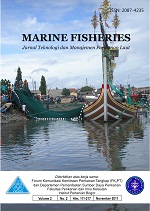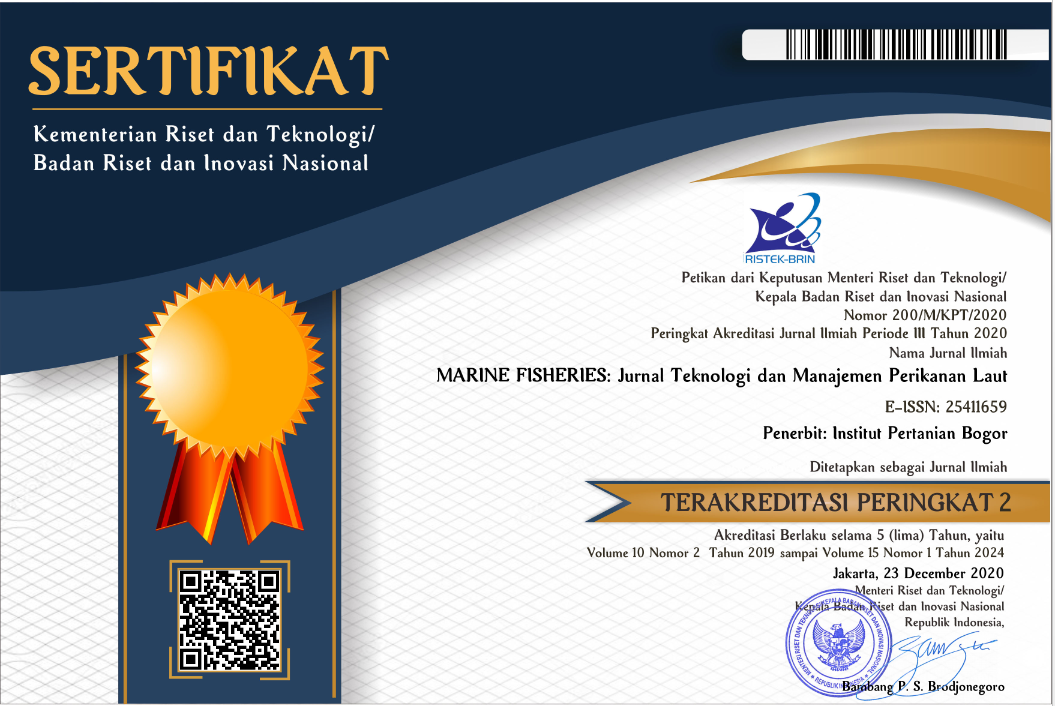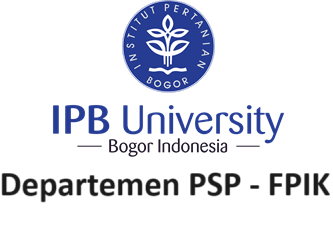STRATEGI PENGELOLAAN UNTUK MENINGKATKAN PRODUKSI UDANG DI KABUPATEN CILACAP (Management Strategies to Increase Shrimp Production in Cilacap Regency)
Abstract
Cilacap is the center of the shrimp fishery in Central Java’s south sea. Lately, the shrimp resources in that area have decreased biologically, which is characterized by a decrease in shrimp production trend line. From 2004 to 2008 there was a decrease by 6.3% per year which was caused by large scale utilization in shrimp resources and degradation in carrying capacity. This study aimed to determine influential factors in decreasing shrimp production and to develop strategies for business development in Cilacap’s shrimp fishery. Data were analyzed using the fish-bone diagram and SWOT (Strengths Weakness Opportunities and Threats) analysis. Influential factors in decreasing shrimp production were 1) fishermen; 2) units of fishing; 3) mangrove forests; 4) fishing methods, and 5) shrimp resources stock. Strategies for Cilacap shrimp fishery management were 1) law enforcement in controlling the shrimp capture and mangrove exploitation; 2) the economic development of fishermen and society; 3) integrated shrimp fisheries management; 4) mangrove and aquatic ecosystems rehabilitation; and 5) increase the environmental and shrimp resources carrying capacity.
Key words: Cilacap, fish-bone diagrams, management, shrimp fishery, SWOT analysis
Downloads
Author(s) who published in this journal agree to following terms:
- Author(s) must understand and agree that the copyright script in published owned by the Marine Fisheries Journal. The copyright includes reproducing and selling the manuscript to all parties.
- Everyone can cite every manuscript published in Marine Fisheries for educational purposes, with the author's name and the Marine Fisheries Journal on reference.









